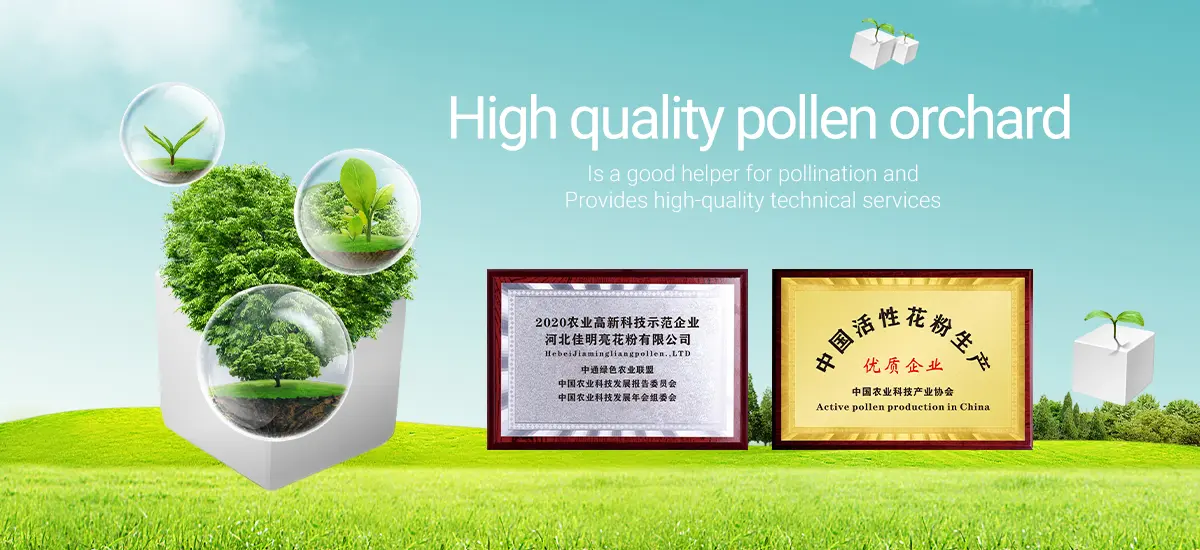Nov . 13, 2024 16:45 Back to list
best preservation of apple pollen
Best Preservation of Apple Pollen
Pollen is a critical component in the reproduction of apple trees, influencing not just yield but also fruit quality. The preservation of apple pollen is vital for ensuring successful pollination, particularly in agricultural practices where cross-pollination between different apple varieties can significantly improve fruit set and overall productivity. Understanding the best practices for pollen preservation can enhance not only apple production but also contribute to the sustainability of apple orchards.
Understanding Pollen Viability
Before discussing preservation methods, it’s essential to understand what affects pollen viability. The viability of pollen refers to its ability to germinate and fertilize the ovules of flowers, and several factors can influence this, including the type of apple variety, environmental conditions during pollen collection, and the methods employed for storage. Freshly collected pollen generally has the highest viability, but its longevity can be extended through proper handling and storage techniques.
Pollen Collection
The first step in preserving apple pollen is collecting it at the right time. Ideally, pollen should be harvested during the early morning hours when the flowers are open and temperatures are cooler, as this can help maintain its viability. Selecting healthy, disease-free trees for pollen collection is also crucial. Flowers should be shaken gently to release the pollen, which can then be collected using a clean, dry container.
Drying and Initial Storage
Once collected, pollen requires drying to remove excess moisture, which can lead to mold growth and decreased viability. Pollen can be dried by placing it in a desiccator or a well-ventilated space away from direct sunlight. A gentle heat source, such as a dehydrator set at low temperatures (not exceeding 40°C or 104°F), can also be used to expedite the drying process without damaging the pollen grains.
best preservation of apple pollen

After drying, the pollen should be stored in airtight containers, such as glass vials or bags made from suitable materials that prevent moisture infiltration. Labeling these containers with the variety and collection date will help in managing the pollen for future use.
Long-Term Preservation Methods
For longer-term storage, freezing pollen is one of the best methods to maintain viability. Pollen can be stored at -18°C (0°F) or lower in a deep freezer. However, it’s essential to ensure that the pollen is completely dry before freezing to prevent ice crystals from forming, which can rupture pollen grains. Vacuum sealing the pollen or storing it with desiccants can further ensure its protection from moisture.
Another innovative approach to pollen preservation is cryopreservation, which involves storing pollen in liquid nitrogen at -196°C (-321°F). This method provides the most extended viability, preserving the genetic material of rare or endangered varieties for research and future planting.
Pollen Utilization
When ready to use the preserved apple pollen, careful thawing is crucial. Rapid temperature changes can adversely affect pollen viability, so it’s best to let the pollen acclimate back to room temperature slowly. Mixing the pollen with a suitable medium, such as sugared water, can enhance the likelihood of successful fertilization when applied to the stigma of the flowers.
Conclusion
Preserving apple pollen effectively is essential for maintaining a productive orchard and promoting biodiversity among apple varieties. By following best practices for collecting, drying, and storing pollen, growers can improve their chances of successful pollination and higher yields. The importance of genetic diversity cannot be overstated, and proper pollen preservation plays a crucial role in ensuring that future generations of apple trees thrive in diverse environments. Through thoughtful management and innovative preservation techniques, we can safeguard the future of apple cultivation and continue to enjoy this beloved fruit for generations to come.
-
Pollen Peach Tree for Pure Pollination and High-Quality Peach Pollen
NewsJul.30,2025
-
Premium Cherry Pollen for Pure Pollination & Different Types
NewsJul.30,2025
-
Artificial Pollination Solutions for Various Plant Pollen Types
NewsJul.29,2025
-
Artificial Pollination Solutions for All Plant Pollen Types
NewsJul.29,2025
-
Premium Plant Pollen for Pure Pollination & Pollen Block Solutions
NewsJul.29,2025
-
Artificial Pollination Solutions for Efficient Crop Yields
NewsJul.28,2025